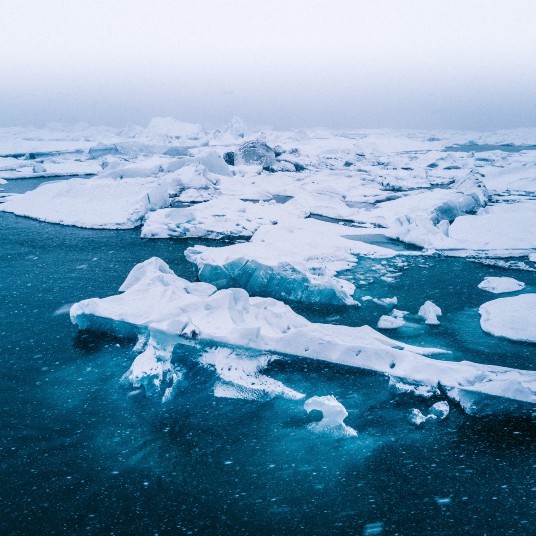Experts are issuing warnings that Arctic ice may completely vanish during summers from 2030 onward due to the impacts of climate change. A recent study published in the scientific journal Nature Communications further reveals that ships will soon be able to navigate through the heart of the North Pole.
What will you find in this article?
An ice-free Arctic
 Each year, the surface water of the Arctic freezes and melts with the seasons. Ice increases in winter, peaks around March, and then decreases toward its annual minimum, usually in September, after the summer months of temperatures.
Each year, the surface water of the Arctic freezes and melts with the seasons. Ice increases in winter, peaks around March, and then decreases toward its annual minimum, usually in September, after the summer months of temperatures.
But global warming prevents it from freezing as much as it should and melts it faster. As a result, we will soon see the Arctic become a vast expanse of water, completely melted.
According to the latest research, it could happen between 2030 and 2050. We may witness the first ice-free late summer in the Arctic in just a few years. But there is more. If greenhouse gas emissions are not drastically reduced, experts warn that by 2100 the Arctic region will be ice-free for almost half a year.
“We may witness the first ice-free late summer in the Arctic in just a few years.”
However, they stress that we could avoid these events if the Paris Agreement goals are met, and global temperature rise is limited to 1.5°C. The problem is that, according to current forecasts, we will exceed the 1.5°C limit in less than five years.
Since the commencement of measurements in 1979, the minimum extent of Arctic ice in September has consistently decreased. Data from NASA gathered through satellite observations reveals that the September Arctic ice has been declining at a rate of 12.6% per decade since 1980.
Previously, only icebreakers could traverse the northwest and northeast Arctic passages in summer. However, tourist ships now sail these waters for several months. The only frozen area remaining impassable is the connection to northern Greenland, which stays ice-covered year-round. Nonetheless, the Nature Communications study indicates that ships will eventually reach that area too.
“September Arctic ice has been declining at a rate of 12.6% per decade since 1980.”
What are the consequences of an ice-free Arctic?
 An ice-free Arctic would significantly impact society and natural ecosystems within and beyond the region. Sea ice plays a crucial role in reflecting solar radiation into space, so as ice diminishes, the Arctic warms more rapidly. This, in turn, accelerates the melting of the Greenland ice sheet, contributing to global sea level rise. Thus, the consequences of an ice-free Arctic extend far beyond its immediate surroundings, affecting the entire planet.
An ice-free Arctic would significantly impact society and natural ecosystems within and beyond the region. Sea ice plays a crucial role in reflecting solar radiation into space, so as ice diminishes, the Arctic warms more rapidly. This, in turn, accelerates the melting of the Greenland ice sheet, contributing to global sea level rise. Thus, the consequences of an ice-free Arctic extend far beyond its immediate surroundings, affecting the entire planet.
Furthermore, a New York Times article highlights that the temperature disparity between the North Pole and the Equator influences mid-latitudes storm paths and wind speeds. Consequently, Arctic warming has the potential to trigger extreme weather events such as heavy rainfall and heatwaves in the temperate zones of North America, Europe, and Asia.
Experts provide us with a timeframe: the first ice-free summer in the Arctic is anticipated to occur between 2030 and 2050. However, the precise timing and severity of the consequences will largely hinge upon the implementation of measures aimed at reducing greenhouse gas emissions and mitigating climate change.
Source: